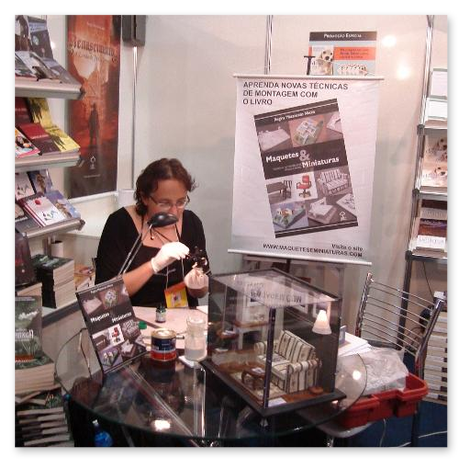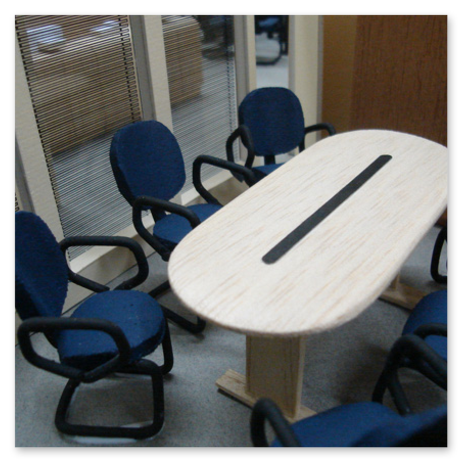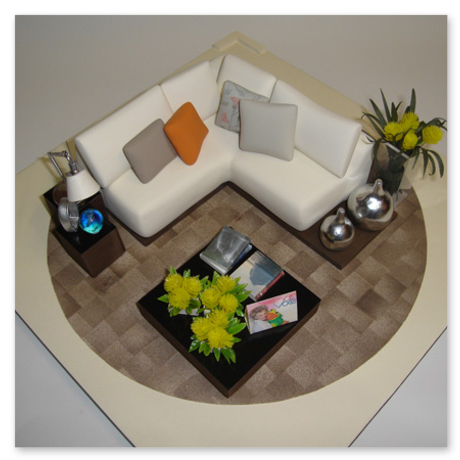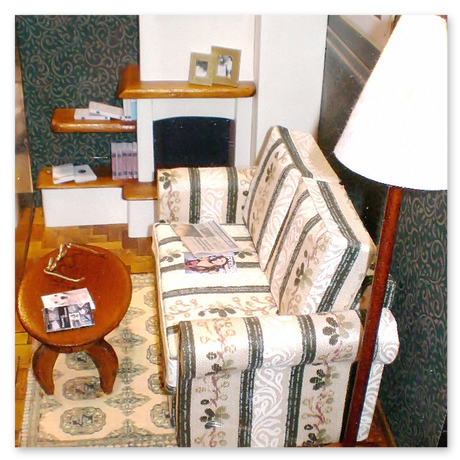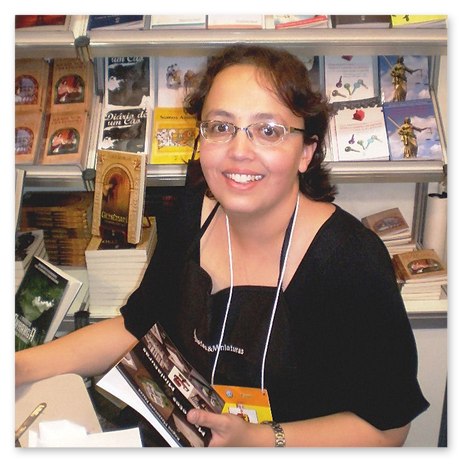Regina Nacca
Interviews > Brazilians
Regina Nacca
What motivated you to write this book?
When I started working with architectural models, it was already more towards the hand-made kind. Not those industrial ones we see when there’s a huge real estate venture. Those usually demand specialized tools and materials to be made. So, I began working with hand-made models and, shortly after, teaching people on how to make them. Then my students would ask me for book references. When I first started, I found very little. When I searched again to recommend to them, nothing had changed. So I realized that there was a need for that kind of literature, aimed for beginners, in Portuguese, and with information about tools and materials we could easily find in Brazil. And which would also be good for professionals, as I speak of the basis, the project, planning. So I came up with tutorials, researched materials, tested paints, varnishes, different kinds of glue, trying to figure out what each one was best for. That’s why there are tables in the book for how long it takes them to dry, etc. I made a deep research, so I am confident to recommend them.
Was it difficult to have your book published? What is it like to write and publish a book in Brazil?
The main difficulty is to have them believe in the project. To begin with, my book is unique. There are some on architecture models, but high standard ones. On hand-made ones, that speak of models and miniatures, there is none. So, at first, no publishing company believed in it. I paid for everything: the first printings, the layout work, I took the pictures and processed them myself. I hired the publishing company just to do the layout and printing, as I had already even managed the copyrights myself. The first issues were digital copies. Only 10 at a time. It costs twice as much, but it was only a few books… Then I started to sell them: 10, 20, 30, 40, 50... That’s when the publishing company realized that there was a market for the book and they sponsored the first 1,000 books. Also, I never sat back and waited for someone else come and do the job. I build the website, I spread the word by going to fairs, to colleges, at Orkut. I worked hard and the result was very positive. Then the publishers believed in it. It’s quite unusual for them to "hold the stakes" upfront, as it’s too risky for them.
Who is your audience?
The book is mostly bought by architecture or design students, and hobbists - either on models or miniatures. When I say miniatures, I mean any object reproduced in a smaller scale. I know that people often call miniature the 1:12 dollhouse miniatures. But the original concept for miniature is anything that is reproduced in a smaller size. All architecture models are miniatures, not all miniature is a model.
How did people react when they saw you making miniatures here at Bienal?
Oh, it’s always very interesting! Miniatures appeal to people. There were many "awe" moments. People look at them and say: "Wow, that’s beautiful!" That’s why I decided to come here.
And how did you get into miniatures?
I already liked them when I was a child. I had a thing for building and playing with dollhouses. Nowadays most toys are ready-made. But it wasn’t like that in my days. You kind of "had" to make your own toys. So, if you see a child today who likes to go "hands on", that should be highly encouraged, as an artist is there lurking to come out.
Professionally, I have always worked with drawings for interior design. At first with perspectives and furniture. Then people would ask me if I would also do models, someone would bring me a model that needed fixing, things like that. And I loved mock-ups! I’ve always loved miniatures. So, I decided to go deeper into it. I took classes (woodworking, plaster modeling, special paintings, etc), and also started working, then teaching, and so forth. That’s how it progressed: from drawings to models to miniatures.
And do you like dollhouse miniatures (1:12)?
I like them, but I like it most when I make them myself. Some things I don’t enjoy making that much. For example, that clay part that Ivani and Betinha do so well - their work is amazing! I really want to buy some of their work to put in my own dollhouse. That’s definitely something I don’t enjoy making: miniature food.
Which material / technique do you prefer?
I believe it’s balsa wood.
Really? Most people complain it’s so difficult to give it a proper and good finishing.
Not really, if you know how to make it. I like balsa wood. If you want to make a wall in a mock-up, balsa wood is not the best choice.
But I like to use it to make miniatures. You can make almost anything, from furniture to objects that are not originally made of wood, all you have to do is cover the texture and it works.
Which is your favorite scale?
It’s 1:10... and 1:12. Sometimes some details are very hard to be reproduced at 1:12, but if you go up a bit on the scale it’s doable. Lately, I’ve been enjoying better making miniatures, roomboxes, than architecture models. I have more fun making them.
Dollhouse collectors or hobbists are still scarce in Brazil. Why hasn’t this hobby spread out here as it’s so widespread abroad? As it happened to Scrapbooking, for example?
Unfortunately, the purchasing power in Latin America is much lower than there. And people’s values here are different too. We don’t have this habit of collecting objects. I believe it’ll get better, but it’ll take a long time. We can’t compare European arts tradition to ours. Brazil is a very young country and it’s still emerging. I believe that, as the purchasing power goes up, and with more widespread access to culture, with internet, more people will become interested, but it’s too soon to tell, as it’s an expensive hobby. Maybe Scrapbooking caught on, even though it’s also expensive, because it’s more related to crafts, the "hands-on" thing. Dollhouse isn’t always. There’s a lot of "just collecting items" to the dollhouse hobby. And Brazilians love crafts.
What are the perspectives for the miniature market in Brazil, in your opinion?
As I see it, Latin Americans and Brazilians don’t mind paying for the product, for material things, but they resist paying for a concept, an idea. So, when we have more DIY kits, the hobby will spread more easily. Those who wouldn’t pay, let’s say, 30 dollars for a miniature, wouldn’t mind paying 10 on a DIY kit.
Even if it’s to find out it’s not so easy to make as they thought before, and appreciate better the perfection in the artist’s work?
Precisely, even if it’s to realize that they can’t do it, that theirs is not as pretty as someone else’s… There will always be that common belief "oh, but I can do that". Affordability counts, and even though the purchasing power is rising, there are so many other goods to buy! That was one of the reasons that pushed me into writing the book. I know that people have a need to make something. And they tend to think things like: "Why would I pay so much for that if I can make it myself?" We know it’s not that simple. Professional miniaturists have know-how, they’ve practiced for years. But it’s hard to convince people of that. This tends to change, but I think it will still take time. We have to go through the DIY step first.
And your plans for the future?
The future… well, I hope that professional miniaturists will be more acknowledged for their work and that people will appreciate this form of art more and more. And also that people will finally fall in love with miniatures.
I hope I can make some other projects come true so that I can help spread this mock-up and miniatures universe.




